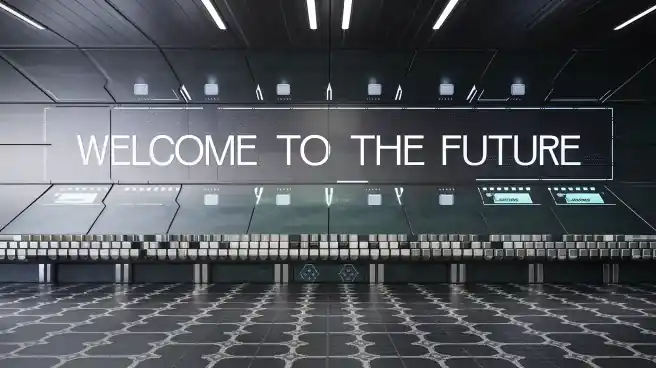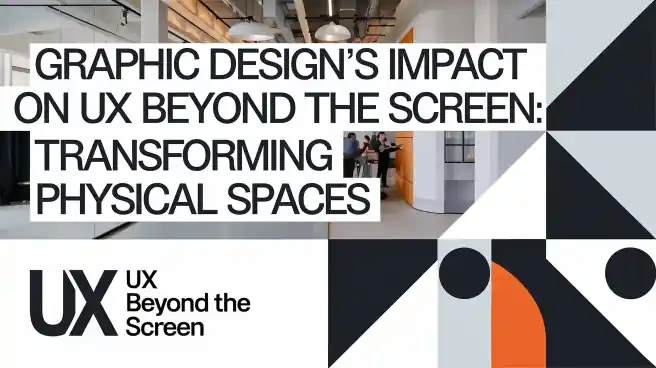In today’s digital age, the term “user experience” (UX) is often associated with websites and apps. However, graphic design’s impact on UX extends far beyond the screen, influencing how we interact with physical spaces, products, and environments. The fusion of graphic design and user experience in the real world is becoming increasingly important, as designers seek to create cohesive experiences that bridge the gap between digital and physical interactions.

The Power of Graphic Design in Enhancing Physical UX
Graphic design’s impact on UX beyond the screen is evident in various industries, from retail to public spaces. In retail environments, for example, graphic design plays a crucial role in guiding customers through stores, creating a visually appealing atmosphere, and ultimately influencing purchasing decisions. Well-designed signage, product packaging, and in-store graphics all contribute to a seamless user experience that extends the brand’s digital presence into the physical world.

Public spaces also benefit from graphic design’s impact on UX. Wayfinding systems, informational signage, and environmental graphics are essential elements that help people navigate complex environments like airports, hospitals, and city centers. By combining aesthetic appeal with functional design, graphic designers enhance the user experience in these spaces, making them more intuitive and user-friendly.
Bridging the Digital-Physical Divide with Graphic Design
One of the most significant challenges in today’s design landscape is creating a consistent user experience across both digital and physical platforms. Graphic design’s impact on UX beyond the screen is particularly relevant here, as designers must consider how their work translates across different mediums. A brand’s identity, for instance, should be instantly recognizable whether encountered online or in a physical setting.

To achieve this, designers often use consistent color schemes, typography, and visual elements that reinforce the brand’s identity. This continuity ensures that the user experience remains cohesive, regardless of the platform. Graphic design’s impact on UX beyond the screen is thus integral to building a strong, unified brand presence that resonates with users in every context.
Enhancing Customer Engagement Through Design
Graphic design’s impact on UX beyond the screen is not just about aesthetics—it’s also about fostering engagement and interaction. In physical spaces, interactive displays, and immersive environments are becoming more common, allowing users to engage with brands in new and exciting ways. These experiences are often designed to complement digital interactions, creating a seamless journey that captivates users from start to finish.

For example, pop-up shops and experiential marketing events often rely on graphic design to create visually stunning environments that encourage user participation. By integrating graphic design with user experience strategies, brands can create memorable experiences that leave a lasting impression on their audience. This blend of design and UX is crucial in today’s competitive market, where capturing and retaining customer attention is more challenging than ever.
The Future of Graphic Design’s Impact on UX Beyond the Screen
As technology continues to evolve, the role of graphic design in enhancing user experience beyond the screen will only grow in importance. With the rise of augmented reality (AR) and virtual reality (VR), designers are now exploring new ways to merge the digital and physical worlds, creating immersive experiences that redefine what’s possible in UX design.

Graphic design’s impact on UX beyond the screen is also likely to expand into new industries and applications. From smart cities to sustainable design practices, the potential for graphic design to shape the user experience in the physical world is vast and largely untapped. As designers continue to push the boundaries of what’s possible, the future of UX will undoubtedly be shaped by innovative graphic design practices that extend far beyond the confines of a screen.
Conclusion: Embracing the Full Potential of Graphic Design in UX
Graphic design’s impact on UX beyond the screen is a powerful force that shapes how we interact with the world around us. By recognizing the importance of graphic design in creating cohesive, engaging experiences in physical spaces, designers can unlock new opportunities to connect with users in meaningful ways. As the lines between digital and physical continue to blur, the role of graphic design in enhancing user experience will only become more crucial, paving the way for a future where design seamlessly integrates with every aspect of our lives.

In this evolving landscape, it’s clear that graphic design’s impact on UX beyond the screen is not just a trend, but a fundamental shift in how we approach user experience as a whole. Whether in retail, public spaces, or emerging technologies, the potential for graphic design to enhance UX is limitless, offering exciting possibilities for designers and brands alike.